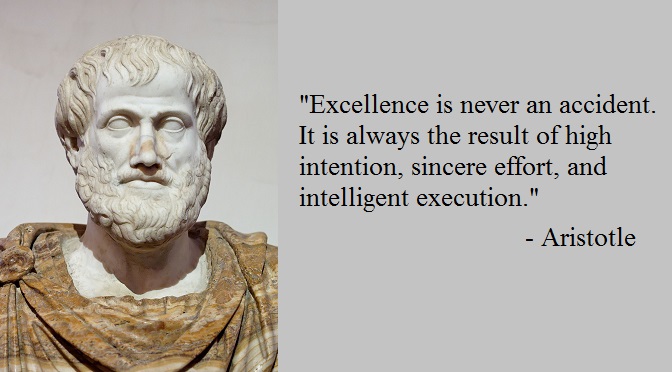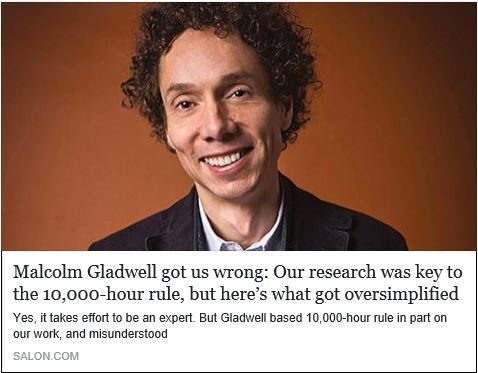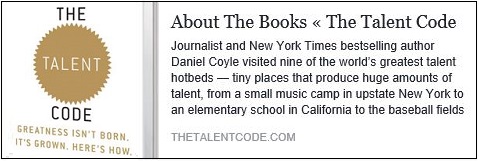Is 10,000 Hours Enough?
“Excellence is never an accident. It is always the result of high intention, sincere effort, and intelligent execution.” — Aristotle
You’ve probably heard of the “Ten Thousand Hour” rule, which was popularized by Malcolm Gladwell’s 2008 bestseller, Outliers. As explained by neurologist Daniel Levitin, research into a variety of fields of endeavor shows that “ten thousand hours of practice is required to achieve the level of mastery associated with being a world-class expert — in anything.” Sounds simple, doesn’t it? Before you rush over to your keyboard to start on your 10,000 hours of practice, however, you should know that this formulation, often cited in the popular press, is a vast oversimplification of what researchers have actually found.
The key research behind the “Ten Thousand Hour” legend was a study published in 1993 by cognitive psychologist Anders Ericsson. (Ericsson, by the way, is based at Florida State University, where I took some graduate-level courses in cognitive psychology while pursuing my PhD in music theory in the late 1990s.) The study examined violin students at a Berlin music academy, seeking to differentiate factors that distinguished the more accomplished of those young violinists from their peers. Individuals in the more accomplished group, it was found, had on the average practiced about 10,000 hours by the age of twenty.
As Ericsson himself points out in this article (co-written with Robert Pool), Gladstone’s formulation confuses these results in several ways. As a round number, 10,000 is obviously appealing, but it represents only the average among those students after their first two decades of life, long before they became true masters of their instruments.
So how long does it really take to achieve actual world-class performance on a musical instrument? As Ericsson and Pool point out: “Pianists who win international piano competitions tend to do so when they’re around thirty years old, and thus they’ve probably put in about twenty thousand to twenty-five thousand hours of practice by then; ten thousand hours is only halfway down that path.”
Most importantly, the “Ten Thousand Hour” rule does not address the specific kind of practice that is needed to achieve true mastery. Mindless repetitions of Hanon exercises will not turn one into a world-class virtuoso. What is needed is a very particular kind of practice, what Ericsson calls “deliberate practice” and others “deep practice.”
According to Ericsson, “deliberate practice,” as used by the more accomplished musicians in his study, involves “constantly pushing oneself beyond one’s comfort zone, following training activities designed by an expert to develop specific abilities, and using feedback to identify weaknesses and work on them.”
The idea of deliberate practice is elaborated by Daniel Coyle, who calls it “deep practice,” in his book The Talent Code. In deep practice, you are working at a “sweet spot” between the easy and the unmanageable. Says Coyle: “Deep practice is built on a paradox: struggling in certain targeted ways – operating at the edges of your ability, where you make mistakes – makes you smarter…. Experiences where you’re forced to slow down, make errors, and correct them – as you would if you were walking up an ice-covered hill, slipping and stumbling as you go – end up making you swift and graceful without your realizing it.”
More specifically, deep practice includes things like absorbing a task as a whole and then dividing it into its components, slowing them down and speeding them up, learning to sense and correct errors immediately. For more detail, I recommend Coyle’s chapter on “The Three Rules of Deep Practice” in Coyle’s book.
Deep practice generates measurable changes in the brain. An insulating substance known as myelin wraps itself around the nerve fibers that are
activated as you practice, speeding up and strengthening the signals that are passed through them, thus optimizing the circuits that carry the skill being
developed. Myelin and associated cells constitute the “white matter” in the brain, and brain scans of concert pianists have found a direct correlation
between the amount of white matter and the number of hours they practiced.
Deep practice must be continued regularly, since myelin like other tissue undergoes constant breakdown and repair. There is a limit on how much daily practice can be effective, however; Ericsson’s research into high-level pianists and other experts indicates that they practice between three and five hours a day. In a future post to this blog I’ll offer some thoughts on how the findings about the nature of deep practice apply to pianists and other performing musicians. Right now, however, I’m headed to the piano to myelinate my brain. 🙂



